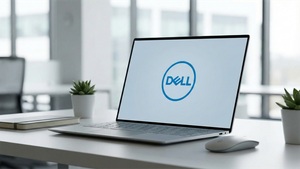By Stacey Faucett
SOURCE: Cisco Systems Inc.
DESCRIPTION:
I work at a company committed to reaching net zero greenhouse gas (GHG) emissions by 2040, including our operations, supply chain, and product use. But what exactly does “net zero” mean, and how can someone interested learn more? Luckily, Cisco recently hosted a #CiscoChat event that took a deeper look at net zero with the help of subject matter experts across the company, including:
- Mary de Wysocki, VP of Corporate Social Responsibility (CSR) and Sustainability
- Katie Schindall, Director of Circular Economy
- Andy Smith, GEMS Sr. Manager, Workplace Resources
- Gordon Thomson VP, EMEAR Architectures and Sales Specialists
Here are some things I learned about net zero from this live discussion:
1. What net zero means
Andy began by sharing the definition of net zero: a state where we add no incremental greenhouse gas emissions into the atmosphere. He explained that net zero is what climate science says the world must reach to avoid the worst effects of climate change, and we have essentially until 2050 to get there as a global community.
Cisco set a goal to reach net zero across all scopes of emissions by 2040, which includes:
- Scope 1: Emissions from fuels we purchase and burn within our operations
- Scope 2: Emissions from electricity we buy for our operations
- Scope 3: Emissions related to our business that we don’t own or control
He also shared how we’ve aligned this goal with the net zero standard established by the Science Based Targets Initiative (SBTi), an organization that helps companies set science-based emissions reduction targets. One of the key requirements of SBTi’s net zero standard is that companies must reduce their emissions on an absolute basis by at least 90 percent, before sequestering or removing the remaining 10 percent.
2. How we are making our products more efficient
Gordon shared how Cisco’s engineering teams have come together to create the Engineering Sustainability Office, so they can look together at how to improve and make better products, solutions, and offers so customers can meet targets they set for themselves around sustainability.
According to Gordon, this is just one example of the cross-functional efforts that are in place to embed sustainability and circular thinking into everything Cisco does.
Cisco’s teams are not only looking at things from a product engineering point of view, including power efficiency, cooling technology, and the optics that connect our products to drive more efficiency. They are also considering how to deploy Cisco products as part of solutions that will help customers meet their sustainability goals.
One point he highlighted as an area of focus is the physical size of products. When you reduce the size of a product, less packaging is required to ship it and less space is required physically in operations, which has a positive impact on emissions.
According to Gordon, one example of a Cisco innovation helping us create a more sustainable future is Silicon One. Silicon One is an application-specific integrated circuit (ASIC) that consumes less energy while delivering more bandwidth – a game-changer for service providers in particular.
3. How circular economy relates to our emissions reduction goals
Katie started off by sharing how a basic principle of a circular economy is that we must reduce the resources we consume to achieve the outcomes we seek.
She explained how Cisco is moving from a linear economy, a single-use model that generates a lot of waste, to a circular economy, where we are reducing resource consumption. Waste should be a resource, but we need to be able to connect the materials, components, or products someone doesn’t need to someone who does, in a usable form. Part of a circular economy is making sure unwanted products are repaired, remanufactured, and reused.
Katie said most people think about energy when they hear the term net zero. But according to experts, it is estimated that transitioning to renewable energy and implementing energy efficiency programs will only address 55 percent of what we need to accomplish to reach net zero goals. The remaining 45 percent relates to manufacturing and using products.
That’s why Cisco is focused on reducing emissions by optimizing resource efficiency through our designs, manufacturing and logistics, and reuse and recycling, as well as using our technology to help customers do the same.
Looking Forward
Mary shared three exciting initiatives that we have at Cisco to accelerate innovation helping to mitigate climate change. One is the Cisco Global Problem Solver Challenge, which awards cash prizes for new business ideas from early-stage entrepreneurs that leverage technology for both social and environmental impact. Last year, the Cisco Foundation announced a $100 million investment to fund nonprofit grants and impact investing in the climate solution space over the next ten years. Also, we recently announced the winners of the Digital Sustainability Challenge, where we invited Cisco partners to help develop solutions using Cisco technology to help our customers tackle their sustainability concerns.
Want more details? Please listen to the full chat.
View original content here
KEYWORDS: NASDAQ: CSCO, Cisco, ciscochat







